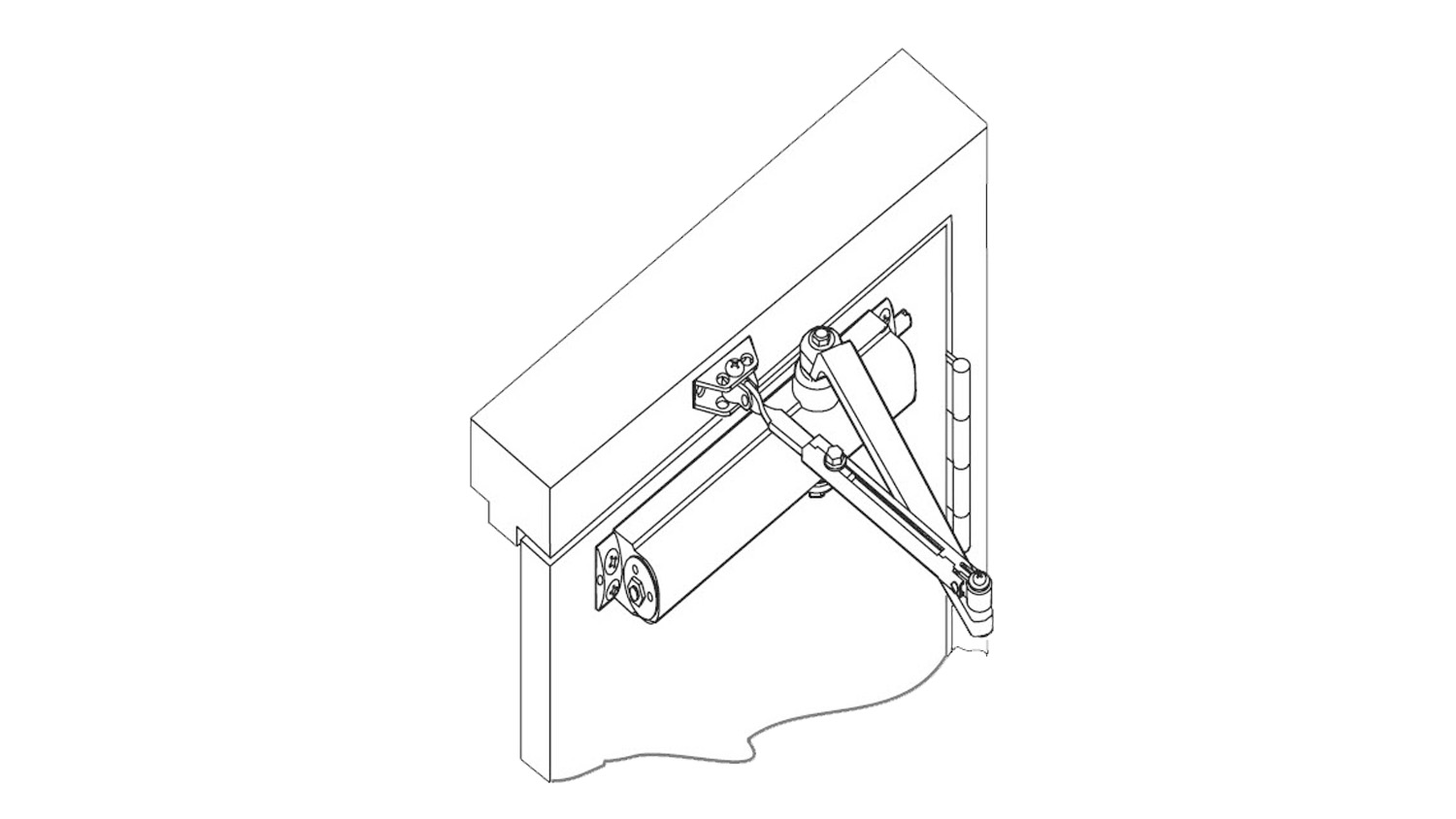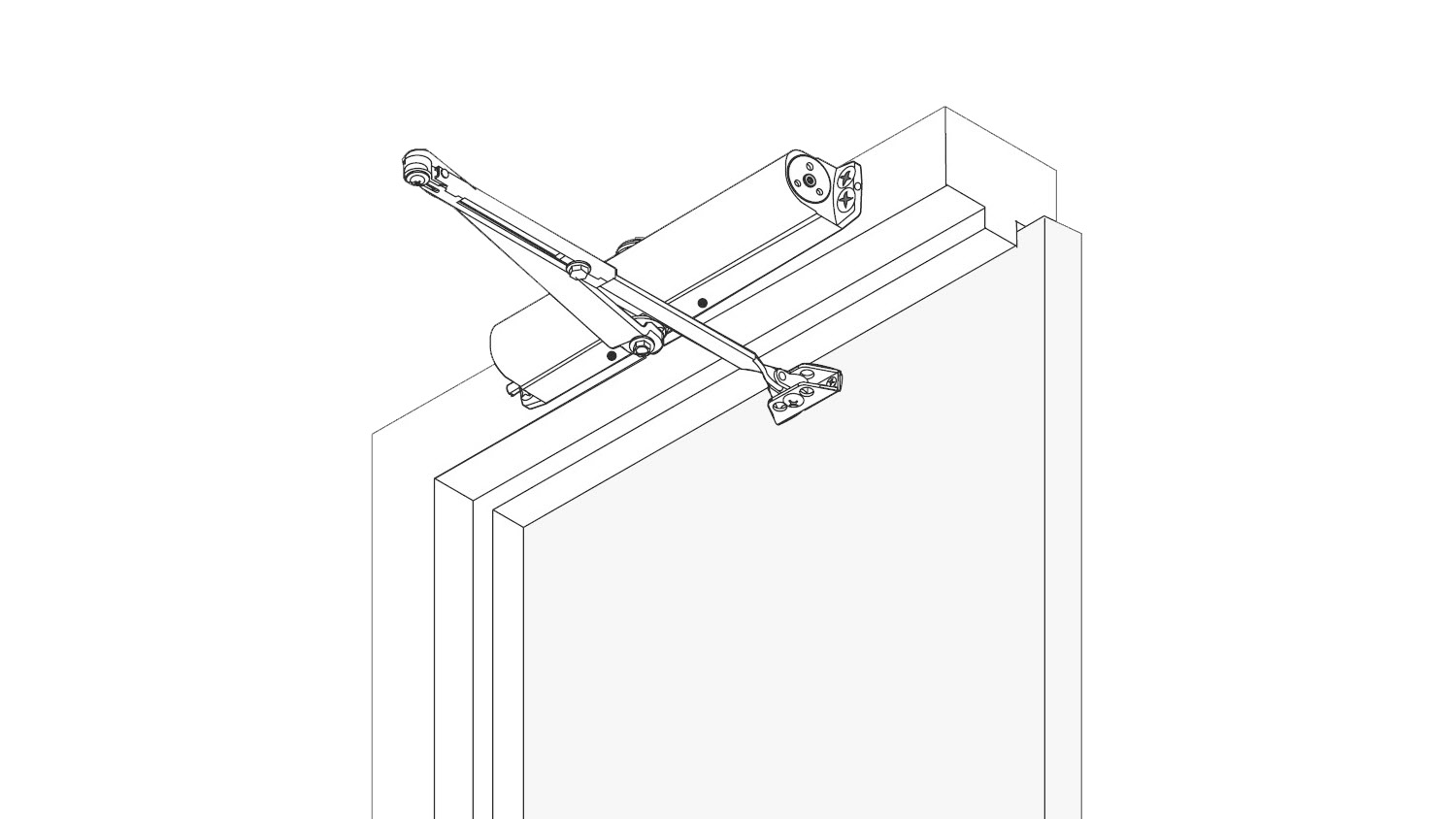A door closer is a mechanical device that closes a door in a controlled manner. It helps prevent the door from standing open, slamming closed, or pulling open in strong winds. The most common examples can usually be found in schools, convenience stores, and a multitude of other smaller businesses and public buildings.
Door closers are recommended with outswing reinforced units. Reinforced doors weigh more than a typical residential door. Self-closing hinges will slam the door into place, jeopardizing the life of the panic hardware over time.
There are three different door closer models. Door Closers are to be field-applied by the door installer.
Overhead Door Closer Types
There are three different types of door closers: Regular Arm, Parallel Arm and Top Jamb Mount. Each of these function in a similar way, but they are installed on different sides of the door. The amount of ceiling clearance needed varies depending on the door closer.
Regular Arm

The regular arm closer is a pull-side application, meaning it is located on the exterior of the door. There are two arms – one attached to the frame and another to a spring-loaded box on the pull-side of the door. The arms, when closed, project out perpendicularly from the door. This is the most power-efficient option available.
Parallel Arm

The parallel arm closer is a push-side application. There are two arms that sit on top of the door when it is closed and attached to the door via a spring-loaded box. Parallel arm door closers are one of the most common applications, particularly in commercial properties and schools, because they reduce the risk of vandalism to the arm and are more attractive than other overhead options.
Top Jamb Mount

The top jamb closer has arms that project out from the door perpendicularly. The spring-loaded box is mounted on the face of the doorframe. These are often used for aluminum or glass storefront doors, because these doors generally have narrow top rails.